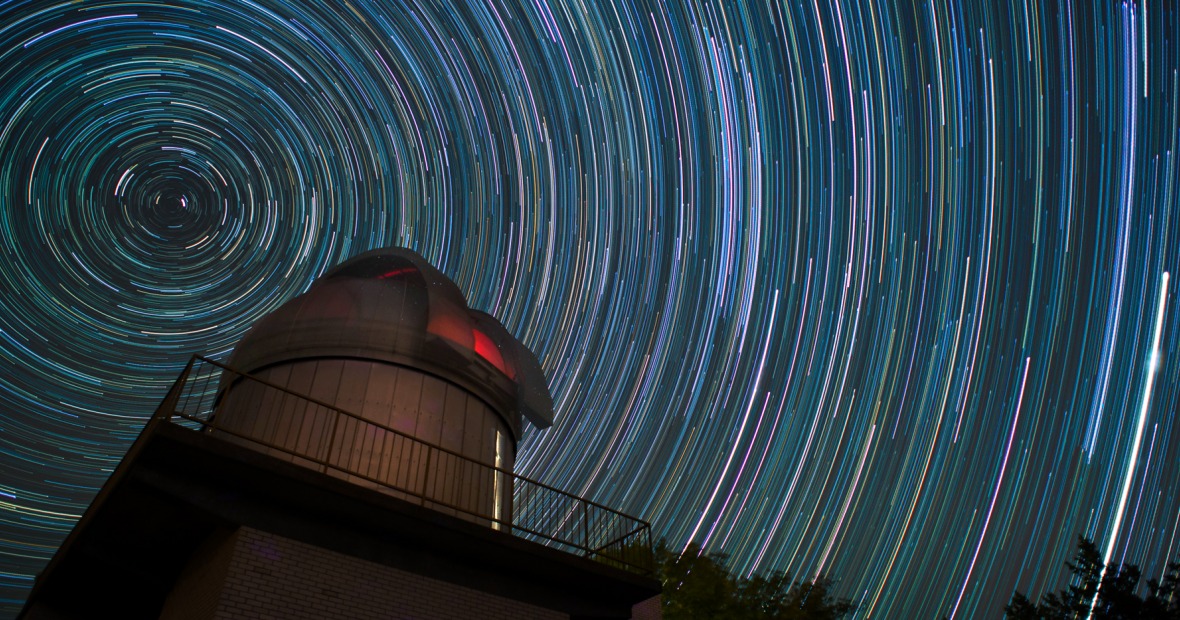Observing the Stars and Planets
If you’re interested in astronomy, “Grinnell is one of the best places you can go,” says Bob Cadmus, professor of physics. Grinnell — without offering a major in astronomy — has graduated about one student per year who goes on to earn a Ph.D. in astronomy.
Cadmus attributes that strong record to students’ focus on physics and the liberal arts as well as their independent work in astronomy.
Some of that work occurs in the Grant O. Gale Observatory, which sits on the north edge of campus, within easy walking distance of residence halls. Cadmus says the proximity to campus was intentional, to make it more accessible to students. Another plus — since the town of Grinnell is small, there’s little light pollution.
The Search for Exoplanets
Jack Muskopf ’16 and Andrew Baldrige ’17, both physics majors, are working in the observatory this summer on Mentored Advanced Projects. Their faculty mentor, Eliza Kempton, assistant professor of physics, studies exoplanets. More than 1,000 exoplanets — planets outside our solar system — have been discovered since 1995.
“We can look at transiting exoplanets fairly easily with our telescope,” Kempton says. The observatory has a 24-inch Cassegrain telescope. “We do real research with this thing.”
Muskopf and Baldrige have been testing a new camera, which will be installed on the telescope soon. Then they’ll be pulling all-nighters in the observatory, processing digital images of exoplanets that are passing in front of their own stars, up to 100 million light-years away.
Muskopf says he’s excited to work in the observatory and “get really high quality photos of stars and have some interesting, useful data.”
Baldrige says, “Every once in a while I sit back and think that I am looking at numbers on a screen right now, but these numbers represent that 100 million light-years away, I know that there’s a star that has a planet orbiting around it.”
Kempton hopes to start training students to use the telescope and help with the data processing. She says it’s an ideal place to get students involved, and they don’t need to be physics majors.
Attracting the Masses
All students are welcome to the observatory during open house events held throughout the year. Baldrige visited it during New Student Orientation his first year. “I looked at a galaxy and it was really clear in the telescope. It was cool because it was something you could never see with a hobbyist’s telescope,” he says.
Cadmus offers open house events to everyone from pre-school children to adults in the community, from current students to alumni. Every summer he offers a workshop for middle-school children and especially tries to interest girls in astronomy.
Jack Muskopf ’16 is from Millstadt, Ill.; Andrew Baldrige ’17 is from Ames, Iowa.

